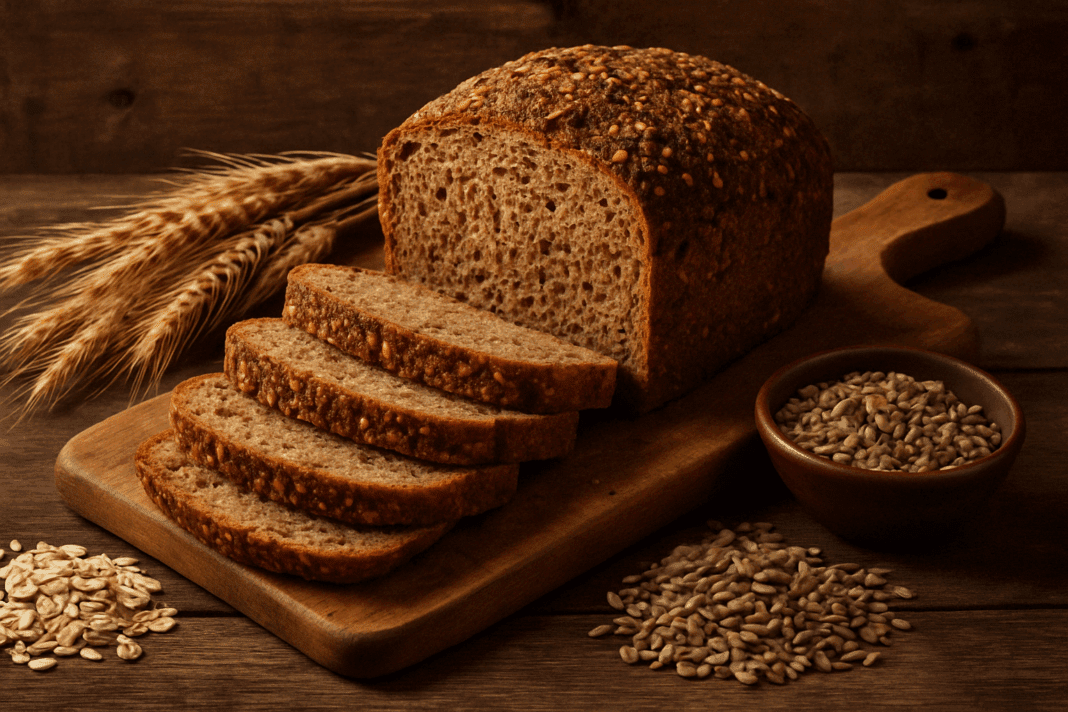Bread is one of the most widely consumed foods around the world, with roots tracing back to the earliest agricultural societies. Despite its enduring presence in human diets, it has also been one of the most misunderstood, especially in modern nutrition discourse. The rise of wellness culture and plant-based eating has prompted consumers to take a closer look at the foods they regularly consume—and bread is no exception. Questions such as what is whole grain bread, is whole wheat whole grain, and is bread a grain are not just nutritional curiosities; they are central to building a diet that supports long-term health. This article offers expert-backed insight into what makes bread “whole,” why the difference between whole grain wheat and refined flour matters, and how to choose the most nourishing loaf for your lifestyle.
You may also like: How a Whole Foods Diet Supports Sustainable Weight Loss: Expert Tips for Eating Whole Foods to Lose Weight Safely
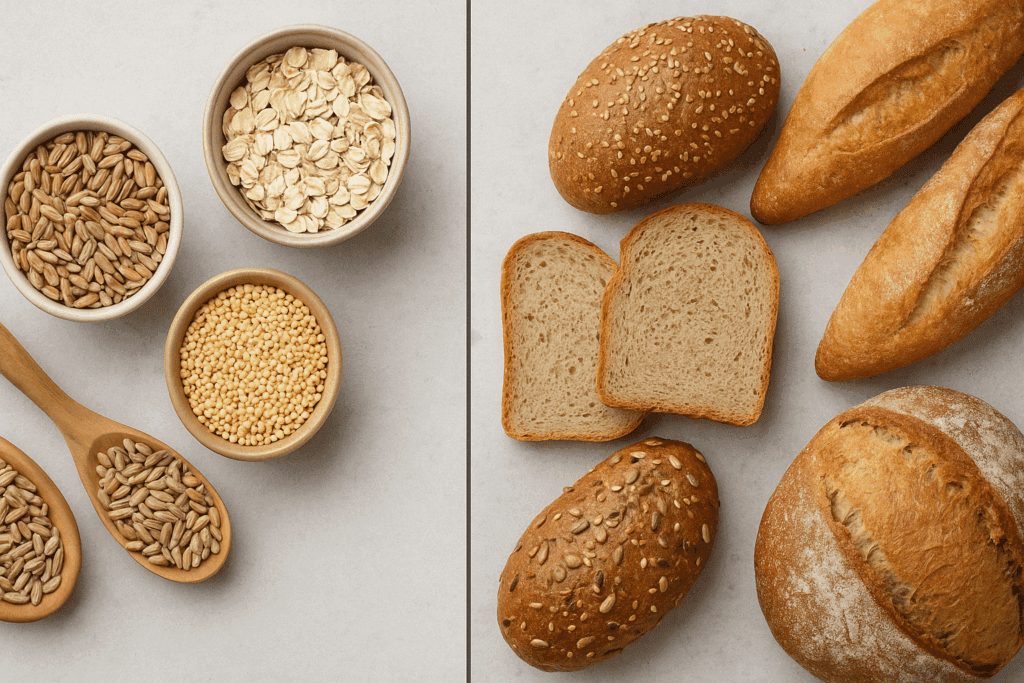
Understanding the Basics: Is Bread a Grain?
Before diving into the details of whole grain labeling, it’s important to answer a foundational question: is bread a grain? Technically, bread is not a grain itself, but it is made from grains—primarily wheat, but also rye, barley, oats, millet, spelt, and others. When we refer to bread as part of the “grain” food group, we’re talking about grain-based products. Bread is considered a processed food derived from cereal grains, and its health value is determined by how much of the original grain remains in the final product.
The term “grain” refers to the edible seeds of grasses that are cultivated for food. Whole grains, in their unrefined state, contain three parts: the bran, the germ, and the endosperm. Each part of the grain serves a nutritional purpose. The bran is rich in fiber and antioxidants, the germ provides healthy fats and essential vitamins, and the endosperm is primarily composed of carbohydrates and protein. The type of bread you choose—refined white, whole grain, or sprouted—determines how much of this nutritional profile you’re actually consuming.

What Is Whole Grain Bread? A Nutritional Definition
When consumers ask what whole grain bread, they’re really inquiring about how much of the original grain makes it into the final slice. Whole grain bread is made using flour that retains all three parts of the grain kernel: bran, germ, and endosperm. Unlike refined white bread, which contains only the endosperm, whole grain bread provides more fiber, B vitamins, antioxidants, and essential minerals like iron and magnesium.
Whole grain bread can be made from various grains—wheat, rye, oats, and others—as long as the grain is used in its whole form. What makes whole grain wheat bread unique is that it’s derived specifically from wheat flour that hasn’t been stripped of its bran and germ. That distinction matters because removing these parts not only decreases the nutrient density of the bread but also alters how the carbohydrates are absorbed, potentially affecting blood sugar levels.
It’s worth noting that not all brown breads are whole grain. Color is not a reliable indicator. Manufacturers may add molasses or caramel coloring to give bread a darker appearance that mimics whole grain products. This makes reading ingredient labels crucial for consumers seeking genuine whole grain options. True whole grain bread will list “whole wheat flour” or “whole [grain name]” as the first ingredient.
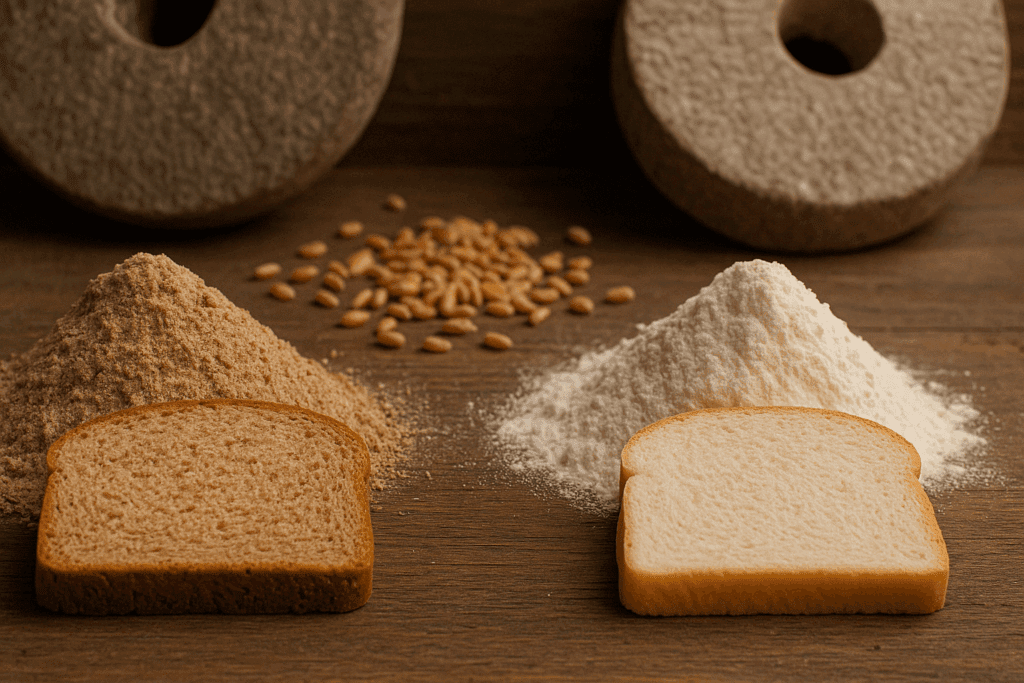
Is Whole Wheat Whole Grain? The Difference Between Whole and Refined Wheat
A common question in the grocery aisle is is whole wheat whole grain? The short answer is yes—when it’s labeled correctly. Whole wheat is a type of whole grain, but not all whole grains are wheat. This means that if bread is labeled as “100% whole wheat,” it should include the bran, germ, and endosperm of the wheat kernel. However, labeling can be deceptive. Terms like “wheat bread” or “made with whole grains” may indicate that only a portion of the grain is included in its whole form, or that refined flour is the primary ingredient.
Understanding the difference between whole wheat and enriched wheat flour is essential for mindful eating. Enriched wheat flour is typically stripped of the bran and germ during processing, then fortified with synthetic vitamins to replace some of the lost nutrients. While enrichment restores certain nutrients, it does not replicate the natural complexity and fiber content of whole grain wheat. This has implications for digestion, satiety, and blood sugar management.
To ensure that your bread is both whole wheat and whole grain, look for certifications such as the Whole Grains Council stamp or read the ingredient list for “100% whole wheat flour” as the first item. This simple step can help you avoid misleading marketing and ensure you’re choosing the most nutrient-dense option available.
What Are 3 Things That Are in Whole Bread?
Consumers who wonder what are 3 thing that are in whole bread are usually trying to distinguish whole grain bread from refined or enriched options. At a minimum, authentic whole bread should contain three essential components of the grain: the bran, the germ, and the endosperm. Each part contributes a unique nutritional benefit that supports overall health and wellness.
The bran is the outer protective shell of the grain and is loaded with dietary fiber, which supports healthy digestion and helps maintain blood sugar stability. Fiber is one of the most under-consumed nutrients in the American diet, and whole grain bread provides a convenient way to boost daily intake. The germ is the innermost part of the grain and is rich in healthy fats, vitamin E, B-complex vitamins, and phytochemicals. This part of the grain supports cellular health and provides long-lasting energy. The endosperm, which makes up the bulk of the grain, contains starchy carbohydrates and proteins. While it is the least nutrient-dense of the three, it still plays an important role in energy supply.
In addition to these grain components, whole bread may also contain added seeds, nuts, or ancient grains for texture and nutritional variety. However, these are enhancements rather than essential elements. The key point is that all three parts of the grain should remain intact in the flour used to make the bread, which is what differentiates whole bread from its refined counterparts.
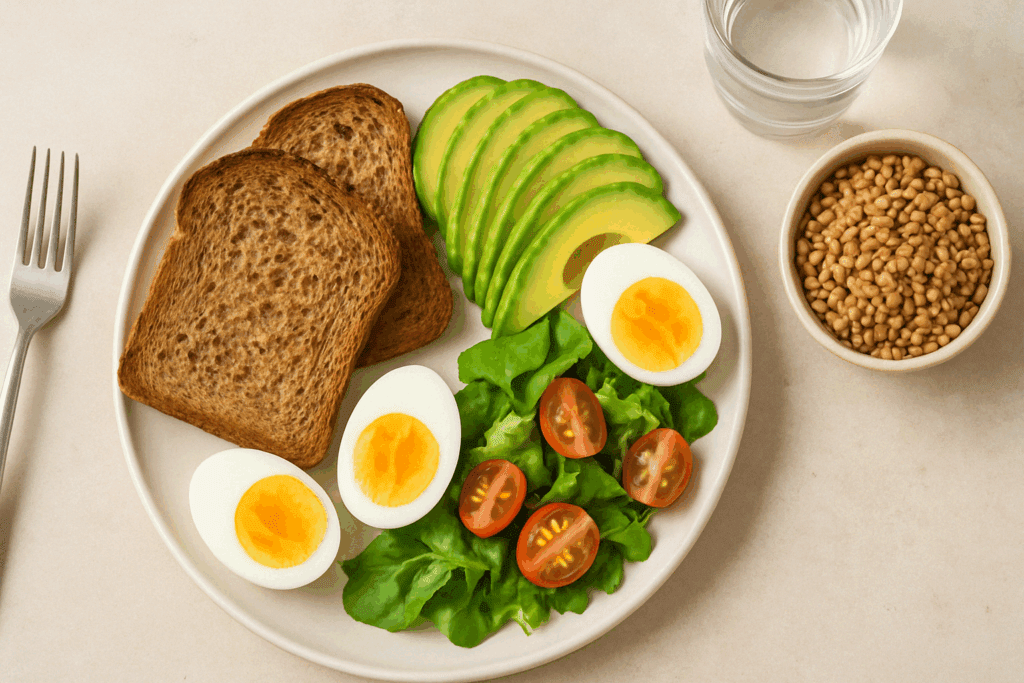
Why Whole Grain Wheat Supports Long-Term Health
Whole grain wheat is one of the most commonly consumed whole grains, and for good reason. It’s versatile, widely available, and backed by a robust body of scientific research. When consumed regularly, whole grain wheat contributes to cardiovascular health, metabolic balance, and digestive wellness. Its high fiber content helps to lower LDL (bad) cholesterol levels, promote healthy bowel movements, and enhance satiety, which can aid in weight management.
The nutritional profile of whole grain wheat extends beyond fiber. It contains essential nutrients like selenium, magnesium, and manganese, which support immune function, bone health, and blood sugar regulation. The B vitamins found in whole wheat—such as niacin, thiamin, and folate—play vital roles in cellular metabolism and energy production.
From a blood sugar standpoint, whole grain wheat offers a lower glycemic response compared to refined flour, thanks to its fiber and intact structure. This slower digestion and absorption help maintain steady glucose levels, which is particularly beneficial for individuals with insulin resistance or type 2 diabetes. Moreover, research shows that diets rich in whole grains are associated with reduced risk of chronic diseases, including certain cancers and age-related inflammation.
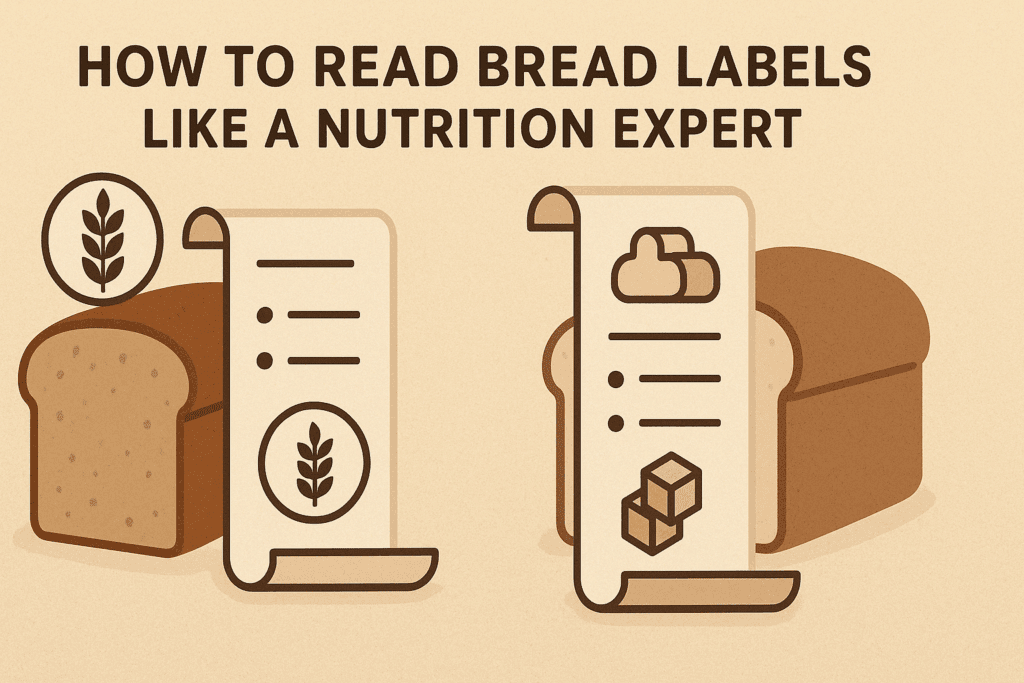
How to Read Bread Labels Like a Nutrition Expert
Choosing whole grain bread isn’t always as simple as picking the darkest loaf on the shelf. Savvy consumers must learn how to read and interpret bread labels to ensure they’re getting a genuinely nutritious product. Begin by examining the ingredient list, which offers the most reliable insight. The first ingredient should be “whole wheat flour,” “whole rye flour,” or another whole grain designation. Avoid labels that list “enriched wheat flour” or “unbleached wheat flour” first—these are refined flours that have been stripped of the most valuable nutrients.
Next, look for the fiber content on the Nutrition Facts panel. A true whole grain bread should contain at least 2 to 3 grams of fiber per slice. If the fiber content is lower than that, the bread is likely made with refined flour or contains only a small portion of whole grains. Pay attention to sugar content as well, since many commercially available breads include added sugars for flavor and preservation. Healthier options will limit added sugar to no more than 2 grams per slice.
It’s also helpful to look for third-party certifications such as the Whole Grain Stamp, which indicates how many grams of whole grains are included per serving. Some breads also carry organic, non-GMO, or sprouted grain labels, which can be additional quality indicators, though they don’t necessarily mean the bread is 100% whole grain.
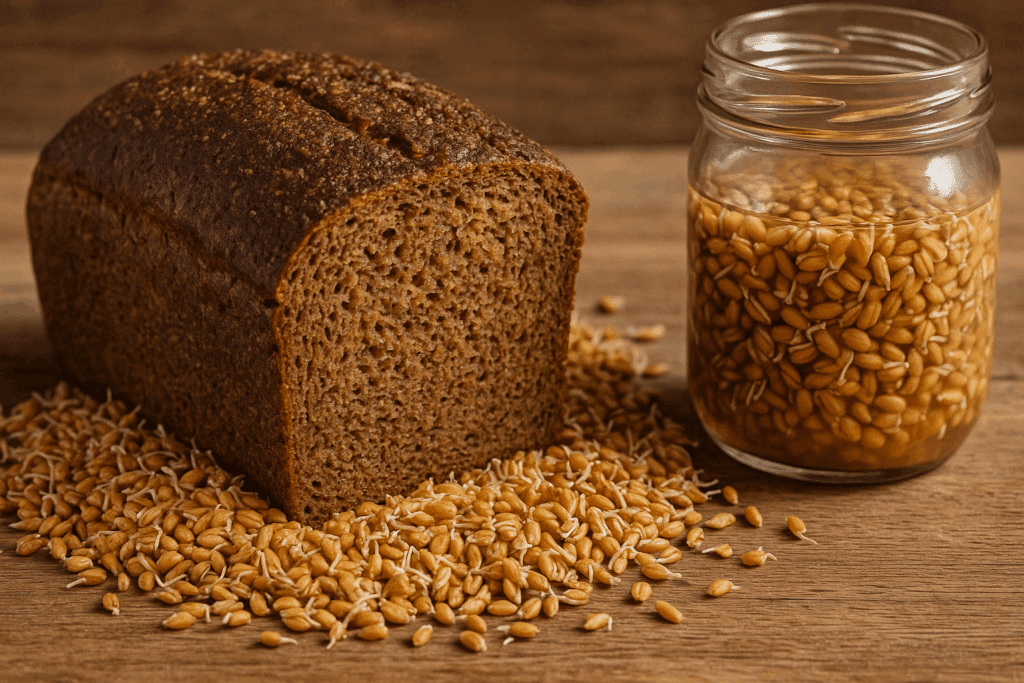
The Benefits of Sprouted Whole Grain Bread
For those looking to take their nutrition a step further, sprouted whole grain bread offers an enhanced version of traditional whole grain products. Sprouted grains are seeds that have been soaked in water and allowed to germinate slightly, triggering enzyme activity that makes nutrients more bioavailable. This natural process breaks down some of the starch and antinutrients in the grain, such as phytic acid, which can interfere with mineral absorption.
Sprouted whole grain wheat bread is particularly beneficial for individuals with sensitive digestion. The sprouting process reduces gluten content and increases levels of certain vitamins, such as folate and vitamin C. It also tends to have a nuttier flavor and denser texture, which many health-conscious consumers find appealing. From a glycemic standpoint, sprouted bread generally causes a slower rise in blood sugar than traditional whole wheat options.
While sprouted bread may cost slightly more than conventional whole grain products, its superior nutritional profile and digestibility often justify the investment for those seeking to optimize their diet. It is especially suitable for people following plant-based diets, as it enhances the protein and nutrient density of meals built around legumes and vegetables.
Whole Grain Bread and Weight Management
Including whole grain bread in a balanced diet can be a strategic move for individuals looking to manage their weight. Unlike refined bread, which digests quickly and causes rapid blood sugar spikes, whole grain bread provides a slow, steady release of energy. This helps reduce cravings and prevent overeating later in the day. The high fiber content also promotes satiety by increasing stomach volume and slowing gastric emptying.
Clinical studies support the connection between whole grain intake and healthier body weight. People who regularly consume whole grains, including whole wheat bread, tend to have lower body mass indexes and reduced abdominal fat compared to those who consume refined grains. While bread alone won’t make or break a weight loss plan, choosing the right type can support metabolic efficiency and appetite regulation.
When including bread in a weight-conscious eating pattern, it’s helpful to pair it with lean protein, healthy fats, and fiber-rich vegetables. This combination stabilizes blood sugar, supports hormone balance, and promotes long-term adherence to healthier dietary habits.
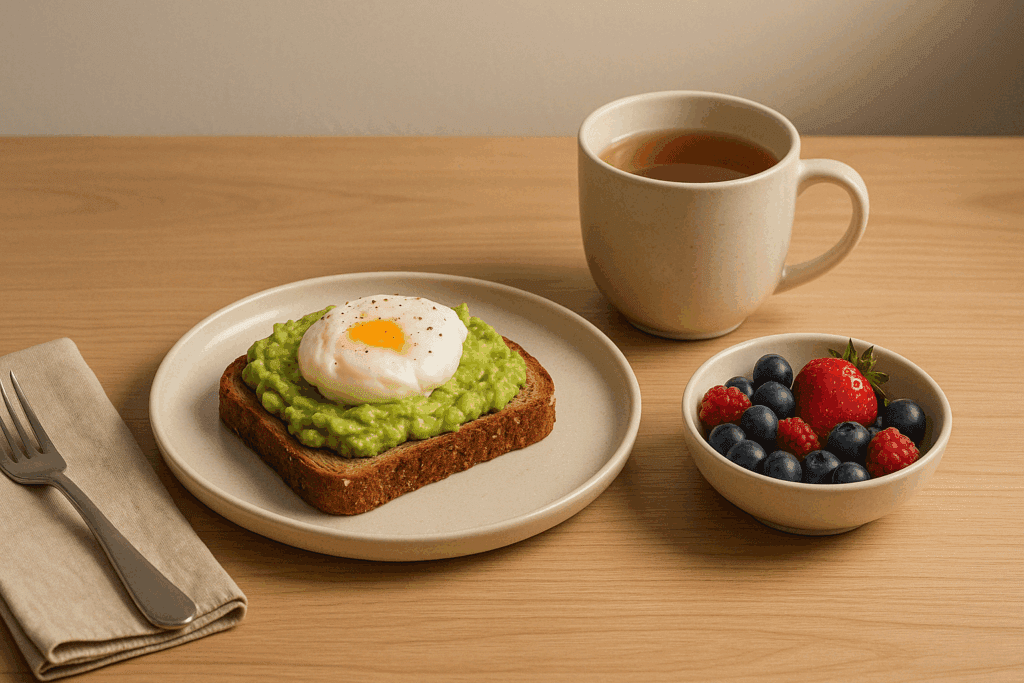
Incorporating Whole Bread into a Balanced, Mindful Diet
Mindful eating is about more than just food choices—it’s a philosophy that emphasizes awareness, intention, and nourishment. Choosing whole grain bread over refined alternatives is a tangible way to align everyday habits with this approach. It supports not only physical health but also psychological well-being by fostering a positive relationship with food.
For breakfast, whole grain toast topped with avocado, hummus, or nut butter provides a nutrient-dense, satisfying start to the day. At lunch, a sandwich made with sprouted whole grain wheat bread and filled with roasted vegetables or legumes offers a fiber-rich, plant-based alternative to processed meals. Dinner can incorporate whole grain bread as a side to hearty soups, stews, or grain bowls, contributing both flavor and satiety.
The key to integrating whole bread into a healthy diet is variety and balance. Pairing whole grains with antioxidant-rich produce, lean proteins, and heart-healthy fats creates meals that are satisfying, nutritionally complete, and aligned with long-term wellness goals.
Choosing the Healthiest Loaf: Final Thoughts for Conscious Consumers
With so many options on the market, choosing the right loaf of bread can feel overwhelming. But once you understand what whole grain bread is, and how it differs from refined or enriched varieties, the decision becomes far clearer. Look for products that retain all three parts of the grain—bran, germ, and endosperm—and that proudly display whole grain ingredients on the label.
Ask yourself questions like: Is whole wheat whole grain in this product, or is it just labeled as wheat bread? Consider what are 3 things that are in whole bread, and whether the product delivers on those promises. And don’t forget the foundational truth: bread, when made with integrity and consumed mindfully, can absolutely be part of a healthy lifestyle.
Sure! Here’s your standalone FAQ section based on the article topic “What Is Whole Grain Bread? Expert Tips to Choose the Healthiest Loaf for Your Diet.” This FAQ introduces fresh insights and advanced-level information, integrating the required keyword phrases naturally and without redundancy:
Frequently Asked Questions: Understanding Whole Grain Bread and Its Impact on Health
1. How does whole grain bread impact blood sugar compared to refined bread?
Whole grain bread affects blood sugar more gradually than refined bread due to its higher fiber and nutrient content. Because whole grain wheat retains the bran and germ, it slows the digestion and absorption of carbohydrates. This leads to a lower glycemic response, helping individuals maintain steadier energy levels and reducing blood sugar spikes. While white bread often causes rapid insulin surges, whole grain bread supports glycemic control—a vital factor for those managing prediabetes or type 2 diabetes. For this reason, when choosing between loaves, understanding what whole grain bread offers can make a critical difference in long-term metabolic health.
2. Are all whole wheat breads automatically considered whole grain?
A common misconception is assuming that all whole wheat bread qualifies as whole grain bread. However, not every product labeled “whole wheat” guarantees the inclusion of all grain components. To accurately determine if a product fits the criteria, check whether the ingredient list includes “100% whole wheat” or “whole grain wheat.” The phrase “is whole wheat whole grain” only applies when the wheat used contains the bran, germ, and endosperm intact. Marketing language can be deceptive, so it’s essential to look beyond front-of-package claims to verify its whole grain authenticity.
3. Can eating whole grain bread support cognitive function and mental clarity?
Yes, whole grain bread may contribute to better brain health, especially when consumed regularly as part of a balanced diet. Whole grain wheat provides B vitamins, particularly thiamine, folate, and niacin, which are essential for cognitive performance and neurological health. These nutrients help in neurotransmitter synthesis and energy metabolism, making them crucial for sustained mental clarity. What is whole grain bread’s value here? It’s not just about fiber—it’s about how the synergy of nutrients supports long-term brain function and may even help reduce age-related cognitive decline. Unlike refined bread, whole options fuel both body and brain.
4. What are 3 things that are in whole bread that make it more nutritious?
When considering what are 3 things that are in whole bread that contribute to its nutritional superiority, focus on fiber, antioxidants, and essential minerals. First, dietary fiber promotes digestive health, stabilizes blood sugar, and fosters fullness. Second, antioxidants such as phenolic compounds help combat inflammation and oxidative stress. Third, minerals like magnesium, zinc, and selenium support cellular function and immunity. These components—often stripped during refining—remain intact in whole grain wheat and are key to understanding why whole grain bread is considered a more complete food.
5. Is bread a grain or a processed food?
The answer depends on how the bread is made. Bread begins as a grain—specifically, wheat or another cereal grain—but most store-bought loaves are processed to varying degrees. To determine if bread remains a true grain-based food, one must ask: is bread a grain in its final form, or has it been refined into something else? Whole grain bread, particularly when made from whole grain wheat, retains the grain’s original structure. In contrast, white bread is a highly processed version that no longer resembles its whole grain origins in either nutrient density or physiological effect.
6. What should I look for on a label to confirm a bread is made with whole grain wheat?
Look for specific language in the ingredient list such as “100% whole grain wheat” or “stone-ground whole wheat.” Phrases like “enriched wheat flour” or simply “wheat flour” do not meet whole grain standards. The order of ingredients matters too; whole grain wheat should be listed first. Claims on the front of packaging can be misleading, so a deeper understanding of what is whole grain bread—and how it’s represented in labeling—is essential. Certifications like the Whole Grains Council stamp can offer additional assurance, but they aren’t mandatory, so consumers should rely primarily on the ingredient list.
7. How does fermentation affect the nutritional quality of whole grain bread?
Fermentation—especially in sourdough made from whole grain wheat—can enhance digestibility and nutrient availability. It breaks down phytic acid, an antinutrient that can inhibit mineral absorption, making nutrients like iron and magnesium more bioavailable. Furthermore, the natural bacteria in fermented whole grain bread produce short-chain fatty acids that benefit gut health. Understanding what is whole grain bread with fermentation reveals deeper nutritional complexity and potential probiotic effects. This means that not only the type of grain but also how it’s prepared influences its impact on health.
8. How can someone with gluten sensitivity still enjoy whole grain bread?
Those with non-celiac gluten sensitivity might tolerate some ancient or sprouted whole grains better than conventional whole wheat. Whole wheat-based whole grain bread contains gluten, alternatives such as whole grain sorghum, millet, or teff can offer similar benefits without triggering symptoms. Asking “is whole wheat whole grain” becomes less relevant here, as these individuals need grain options outside the wheat family. Fortunately, gluten-free whole grain breads exist and can be nutritionally dense when made with ingredients that preserve the whole grain structure, supporting gut health and energy without compromising sensitivity.
9. What innovations are emerging in whole grain bread formulations?
Bread innovation is rapidly evolving to meet growing health demands. Many bakers are exploring sprouted whole grain wheat, which improves digestibility and nutrient content. Others are developing hybrid flours that blend whole grain wheat with seeds, legumes, or resistant starches to boost prebiotic effects. In this context, understanding what whole grain bread is takes on new meaning—it’s not just traditional loaves anymore but a growing category that includes personalized nutrition. Future developments may include functional whole grain bread with targeted benefits, such as blood sugar control, microbiome support, or enhanced satiety.
10. Why do some people feel fuller after eating whole grain bread?
Whole grain bread promotes satiety due to its fiber and protein content, which slow gastric emptying and prolong digestion. Unlike refined bread, which digests quickly and can lead to hunger rebounds, whole grain wheat sustains energy over time. Additionally, the bran and germ components contain compounds that interact with gut hormones like ghrelin and leptin, helping regulate appetite. When asking “what are 3 things that are in whole bread” that support fullness, fiber, healthy fats, and plant-based protein top the list. These elements explain why choosing whole grain bread can be an effective strategy for weight management and mindful eating.
Conclusion: Why Choosing Whole Grain Bread Matters for Long-Term Health
In the context of a modern, health-focused lifestyle, understanding what is whole grain bread is empowers consumers to make choices that nourish both body and mind. Whole grain bread isn’t just a better option—it’s a smarter, evidence-based investment in cardiovascular health, metabolic balance, digestive wellness, and dietary satisfaction. Whether you’re reading labels, comparing ingredients, or simply wondering is bread a grain or is whole wheat whole grain, the answer lies in the grain’s wholeness.
By prioritizing bread that includes all parts of the grain and provides genuine nutritional value, you’re supporting long-term wellness in every bite. And when you ask yourself what are 3 things that are in whole bread, you now know: bran, germ, and endosperm—the trifecta of nourishment. Choosing bread made from whole grain wheat is a meaningful, accessible way to eat with intention, clarity, and confidence. As the foundation of so many meals around the world, bread—when made right—can support not only your hunger but your health.
Was this article helpful? Don’t let it stop with you. Share it right now with someone who needs to see it—whether it’s a friend, a colleague, or your whole network. And if staying ahead on this topic matters to you, subscribe to this publication for the most up-to-date information. You’ll get the latest insights delivered straight to you—no searching, no missing out.
Further Reading:
The 7 Healthiest Types of Bread
I’m a Dietitian, and This Is My Favorite Healthy Bread
What’s the Difference Between Whole Wheat, Whole Grain, and Multigrain Bread?
Disclaimer
The information contained in this article is provided for general informational purposes only and is not intended to serve as medical, legal, or professional advice. While NewsHealthWatch strives to present accurate, up-to-date, and reliable content, no warranty or guarantee, expressed or implied, is made regarding the completeness, accuracy, or adequacy of the information provided. Readers are strongly advised to seek the guidance of a qualified healthcare provider or other relevant professionals before acting on any information contained in this article. NewsHealthWatch, its authors, editors, and contributors expressly disclaim any liability for any damages, losses, or consequences arising directly or indirectly from the use, interpretation, or reliance on any information presented herein. The views and opinions expressed in this article are those of the author(s) and do not necessarily reflect the official policies or positions of NewsHealthWatch.

